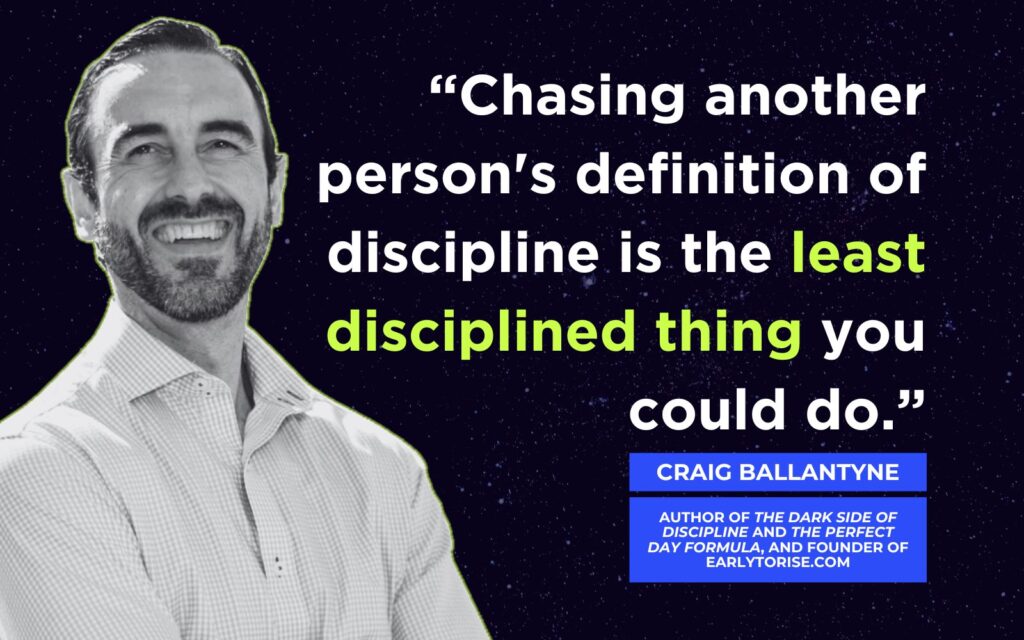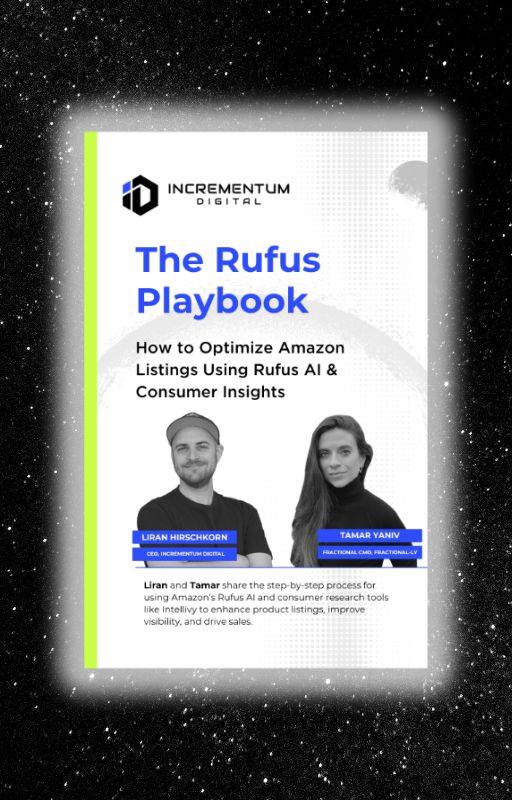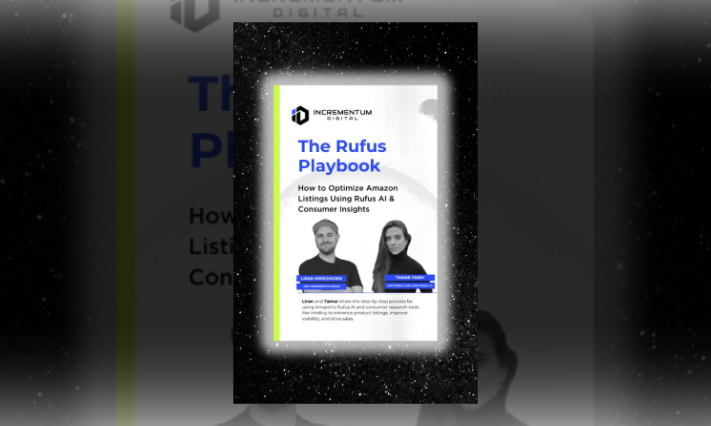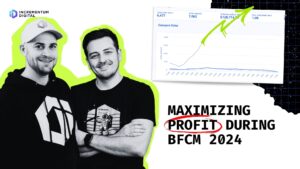Performance Growth
Craig Ballantyne on Effortless Discipline and Why Most People Get It Wrong

Ambition is high. Pressure is nonstop. When deadlines get tighter or goals start slipping, most people react the same way. They push harder. Sleep less. Try to force their way through it. But that approach doesn’t scale.

Learn How to Make Listings That Convert in 2025!
Read our step-by-step guide on how to optimize your listings using Rufus AI insights. Sign up for our newsletter and get your copy for free!
Show me howIn a recent conversation, our CEO Liran Hirschkorn sat down with Craig Ballantyne, author of The Perfect Day Formula and The Dark Side of Discipline and founder of EarlyToRise.com, a productivity and personal development platform focused on helping entrepreneurs and high performers achieve more with less stress. They talked about what really drives growth and consistency… and it’s not willpower. It’s systems.
Craig is known as the “World’s Most Disciplined Man.” But he’ll be the first to tell you that real discipline isn’t about grinding. It’s about structure. The right systems make success easier and more sustainable.
The Discipline Myth
Hustle culture loves to sell the idea that success is about doing more. Wake up earlier. Work longer. Push harder. Suffer now, win later.
But here’s the truth: suffering isn’t a strategy. It’s a distraction.
Most people confuse discipline with grind. They believe discipline means force: sheer willpower, brute effort, and powering through at all costs. That belief leads to burnout, inconsistent results, and wasted energy on things that don’t move the business forward.
Real discipline isn’t about doing everything. It’s about doing the right things consistently and without drama. As Craig puts it, “Chasing another person’s definition of discipline is the least disciplined thing you could do.”
Just because something works for someone else doesn’t mean it belongs in your playbook. The moment you start following someone else’s routine, goals, or structure without thinking critically, you lose clarity on your own. Discipline without intention is just noise.
The Real Power Behind Consistency: Systems
If discipline isn’t about pushing harder or doing more, then what is it really about? The answer is consistency. But not the kind that depends on willpower or motivation… because those eventually run out.
Willpower is a limited resource. You might start the day with strong intentions, but by the time you’ve fought through distractions, decisions, and competing priorities, you’re worn down. This is why even the most driven people find themselves stuck in cycles of stop-start execution. It’s not a character flaw. It’s a systems problem.
Craig emphasizes that the key to sustainable success is building systems that make consistent action easier. When you’re not relying on daily willpower to make progress, you’re free to focus on what matters most.
He breaks this down into a simple but powerful three-part framework:
- Elimination – Start by removing distractions, unnecessary choices, and anything that pulls your attention away from high-impact work. This could mean cutting meetings, automating low-value tasks, or saying no to initiatives that don’t align with your goals.
- Preparation – Consistency thrives on structure. Planning your days, pre-scheduling priorities, and setting clear expectations with your team reduces reactivity and increases follow-through. It’s about putting the right pieces in place before you need them.
- Connection – Even the best systems can fall apart without accountability. Whether it’s through coaching, peer support, or internal team rituals, having someone to check in with keeps you aligned and committed. Most people won’t hesitate to break a promise to themselves, but they’ll move mountains not to let someone else down.
This framework shifts the weight from effort to infrastructure. When your environment and routines are designed to support your goals, discipline becomes a byproduct, not a constant uphill battle.
Even organizations perform better when they focus on systems instead of heroic efforts. This HBR article backs that up with real-world examples.
How to Apply This Framework
Understanding the power of systems is one thing. Putting it into practice is where the transformation happens.
Think less “daily routine,” more “operating system.” Craig’s framework gives you the structure to focus, decide faster, and stay aligned with where you’re really trying to go. When you know exactly what you’re working toward, it’s easier to say no to distractions, avoid burnout, and stay consistent without constantly second-guessing yourself.
It starts with getting grounded in three key areas:
- Define your why
Why are you doing this? What’s the deeper reason behind your ambition? For many, it’s not just about revenue or growth — it’s about freedom, impact, family, or legacy. When you’re clear on this, it becomes a lens through which every decision is made. - Design your vision
Where do you want to be in the next 12 to 36 months? Picture your business, your role, and your day-to-day in detail. What does success look like? What are you building toward? Without a vision, you’re just reacting. - Clarify your definition of success
Be specific. “Grow the business” or “work less” isn’t enough. Define the metrics that actually matter — revenue, margin, time off, product ranking, team structure. The more measurable your goals, the easier it is to align your actions with them.
Once these pieces are clear, everything else gets simpler. Opportunities, tasks, and priorities can be run through a clear filter: Does this move me closer to what I said I want?
If the answer is no, it’s not worth your time, no matter how shiny or urgent it looks.
Level 10 Effort on Level 10 Problems
One of the biggest reasons people stay stuck isn’t laziness; it’s a misdirected effort. Most avoid their most important and most difficult challenges. They stay busy instead of getting better. They check boxes, chase small wins, and stay in motion rather than making real progress.
Craig puts it simply: If you want meaningful results, you need to put level 10 effort into level 10 problems.
In business, that might mean rethinking your customer acquisition strategy, fixing a broken pricing model, or restructuring a team. These aren’t quick fixes, but they are the high-leverage problems that create real breakthroughs when solved.
The problem is, they’re uncomfortable. So instead, people fall back on easier, low-impact activities:
- Tweaking ad copy without a clear strategy
- Testing tools instead of improving their process
- Chasing trends instead of owning a focused roadmap
These tasks feel productive in the moment, but they rarely move the business forward. The real progress comes from narrowing your focus and putting your best effort into the problems that actually matter.
The Hidden Cost of Shiny Object Syndrome
This is where most high performers get tripped up. It’s not that they aren’t working hard. It’s that they’re chasing too many “good” ideas and never getting deep enough into the great ones. Growth stalls, not because of a lack of action, but because of too much of the wrong kind.
Entrepreneurs and marketers are especially vulnerable to this. The instinct to spot opportunity is what makes them effective. But without a clear filter, every new tool, tactic, or partnership feels like something you have to pursue.
Craig offers a simple but powerful way to cut through the noise: Ask yourself two questions. Is this necessary for success? Is this sufficient for success?
If the answer to both is no, walk away. If it’s not required and it won’t meaningfully move you forward on its own, it’s a distraction.
The more clarity you have around your core goals, the easier it is to recognize shiny objects for what they are. Not every opportunity deserves your attention. The ones that do will align directly with what you’ve already committed to building.
How to Stay on Track
Even with the right strategy and systems, staying consistent can be difficult. Especially when you’re leading a team, making decisions daily, and constantly adapting to new challenges.
This is where most people lose momentum. Not because their goals aren’t clear, but because they try to manage everything in isolation.
Motivation is unreliable. It fades. Systems give you structure, but accountability gives you staying power. Coaches, team members, and trusted peers help you follow through when things get hard or unclear.
Craig calls it “Lonely Entrepreneur Island.” It’s the trap of working in a vacuum, surrounded by people who don’t fully understand what you’re building or why. Staying connected to people who share your mindset and your pace isn’t optional. It’s essential.
Final Thoughts: Is Your System Supporting Your Goals?
When things feel busy but not productive, it’s usually not a motivation problem, it’s a systems problem. Taking a few minutes to step back and look at the structure behind your workflow can go a long way.
Here’s a quick checklist to help you evaluate where you’re at:
- Is your “why” clear and guiding your priorities?
- Do you have a clear vision of where you want to be in the next 12 to 36 months?
- Are your success metrics specific, realistic, and aligned with that vision?
- Are you focused on solving the highest-impact problems in your business?
- Do your current systems reduce friction and help you stay consistent?
- Is there built-in accountability — whether from your team, peers, or a coach?
- Do you have a simple way to filter out distractions and say no to things that don’t serve your goals?
If a few of these feel unfinished, that’s okay. What matters is taking the time to notice it.
Real growth doesn’t come from doing more. It comes from getting clear on what matters, building systems around it, and giving it your best effort. Focus, structure, and consistency; that’s the real edge.
Watch the full 36-minute conversation here:
LET’S DISCOVER WHAT’S POSSIBLE FOR YOUR BRAND
We’re here to listen and uncover opportunities tailored to your unique goals.
Fill out the form to get started, and you’ll walk away with real insights and actionable recommendations—whether we work together or not.
- HANDS-ON LEADERSHIP
- AWARD-WINNING PARTNERSHIPS
- CUSTOM-BUILT SOLUTIONS




